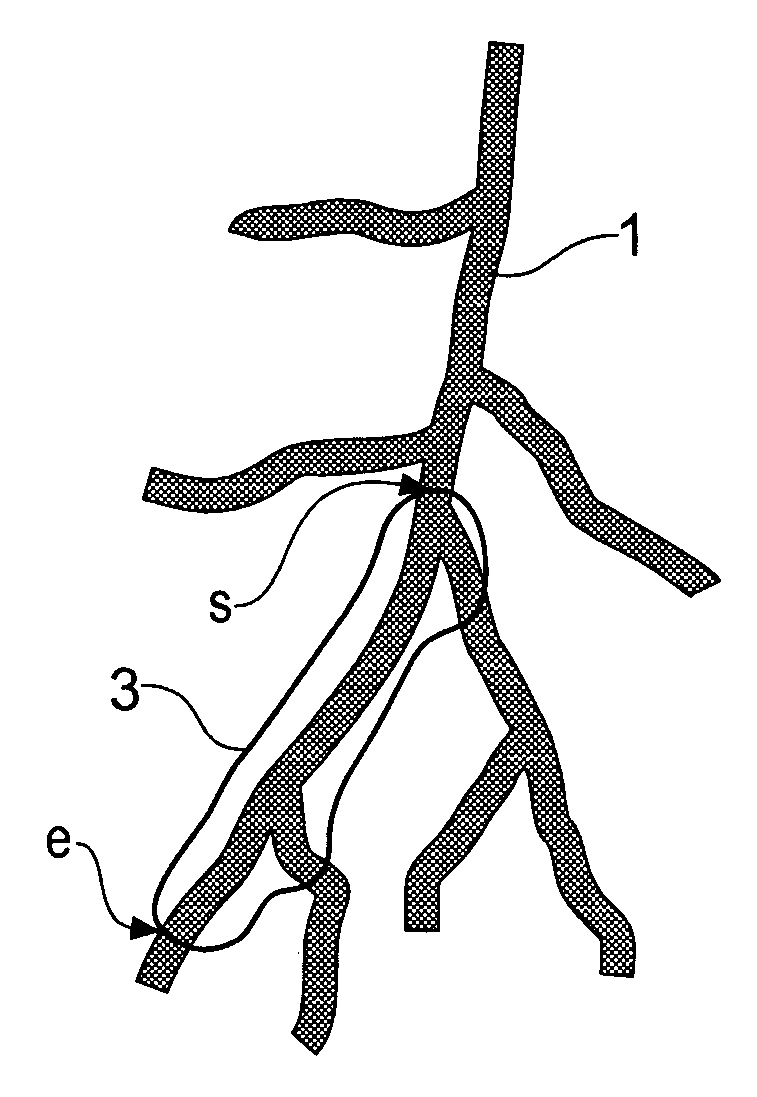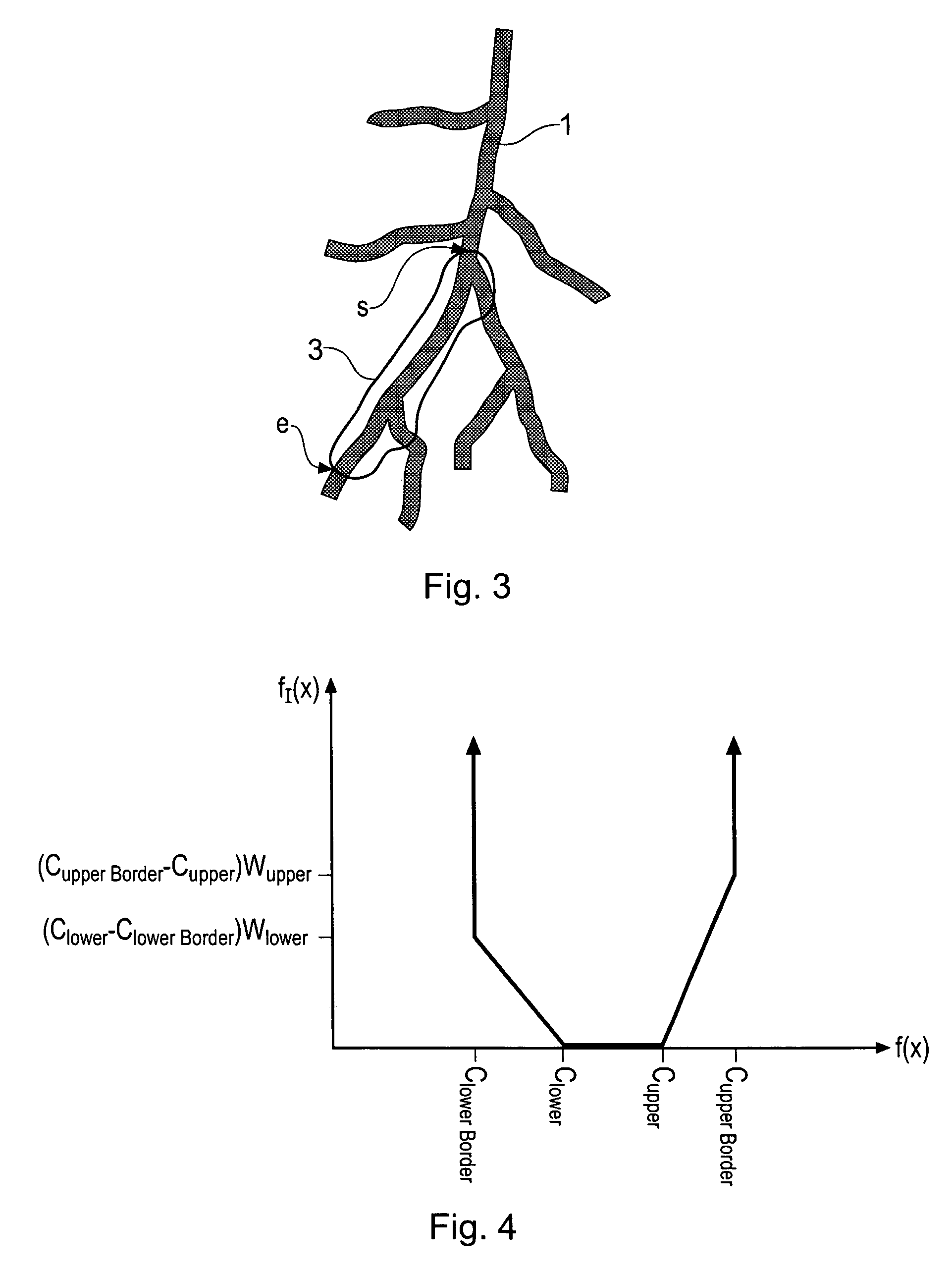Method for determining a path along a biological object with a lumen
a biological object and path technology, applied in the field of path determination along a biological object with a lumen, can solve the problems of high cost of paths partially or wholly outside the vessel, high computation overall cost, and execution times of several tens of seconds, so as to reduce the time taken to identify, less computation, and the effect of reducing the tim
- Summary
- Abstract
- Description
- Claims
- Application Information
AI Technical Summary
Benefits of technology
Problems solved by technology
Method used
Image
Examples
first embodiment
[0041]The present inventors have recognised that this problem with Dijkstra's algorithm can be addressed by a modification. They have appreciated that a medical image three-dimensional volume data set can be considered to be a Euclidean network. In a Euclidean network, pluralities of nodes are connected by branches of known distance. In addition, the absolute spatial position of every node is known, so that the Euclidean distance (“as the crow flies” or shortest straight line distance) between any pair of nodes can be calculated. In the case of the three-dimensional volume data set, the voxels are regularly spaced in an array with known separations between the columns and rows of voxels (depending on the resolution of the imaging system used and any subsequent data processing) so that the Euclidean distance between any pair of voxels (not only adjacent voxels) is known. Incorporating this information into Dijkstra's algorithm provides a significant improvement to the path finding.
[0...
third embodiment
[0060]For some lumen path finding applications, in particular stent planning, stenosis sizing and virtual endoscopy, it is necessary or preferable to find the centerline path. This is the path that runs approximately along the geometric longitudinal axis of the lumen. For stent planning and stenosis sizing, a centerline enables accurate measurements to be taken from the anatomical region. In virtual endoscopy, it is desirable that the virtual camera follows the centerline path to avoid the impression to the user that the camera is about to collide with the object wall, and also to give the best possible view of the environment within the lumen to increase the chance that abnormalities are detected.
[0061]It is highly unlikely for any practical start and end point for a path in a lumen of interest that the shortest or lowest cost path will be the centerline path, particularly in a highly curved and / or branched network, where the shortest path will tend to hug the object wall around co...
PUM
 Login to View More
Login to View More Abstract
Description
Claims
Application Information
 Login to View More
Login to View More - R&D
- Intellectual Property
- Life Sciences
- Materials
- Tech Scout
- Unparalleled Data Quality
- Higher Quality Content
- 60% Fewer Hallucinations
Browse by: Latest US Patents, China's latest patents, Technical Efficacy Thesaurus, Application Domain, Technology Topic, Popular Technical Reports.
© 2025 PatSnap. All rights reserved.Legal|Privacy policy|Modern Slavery Act Transparency Statement|Sitemap|About US| Contact US: help@patsnap.com



